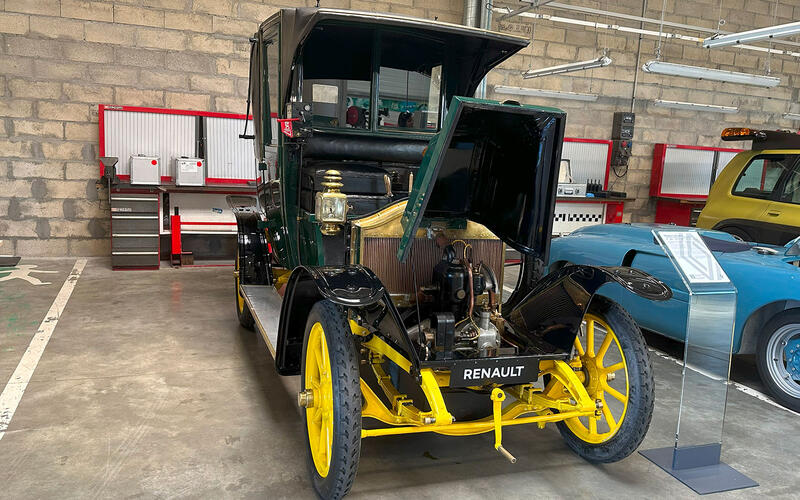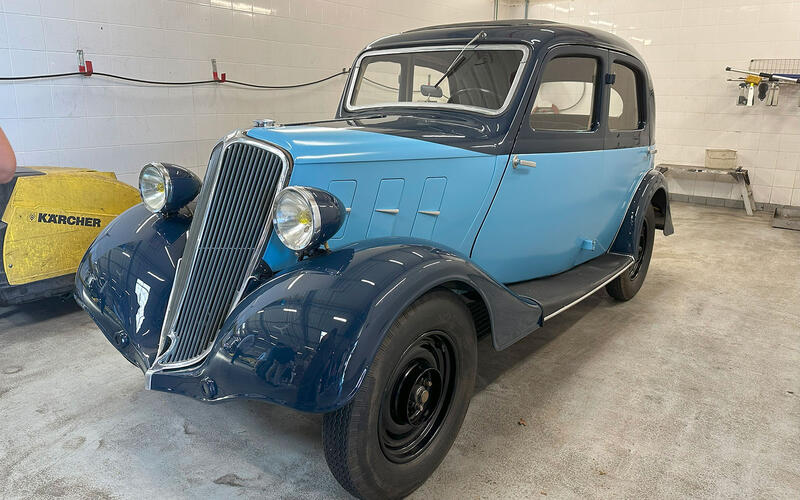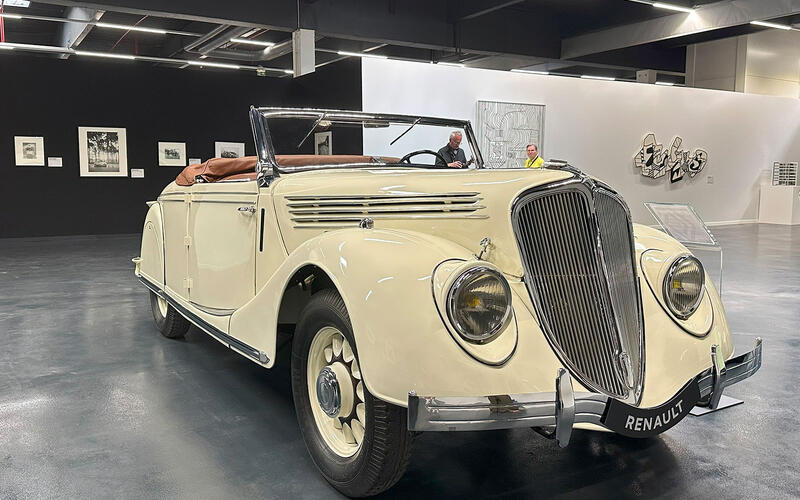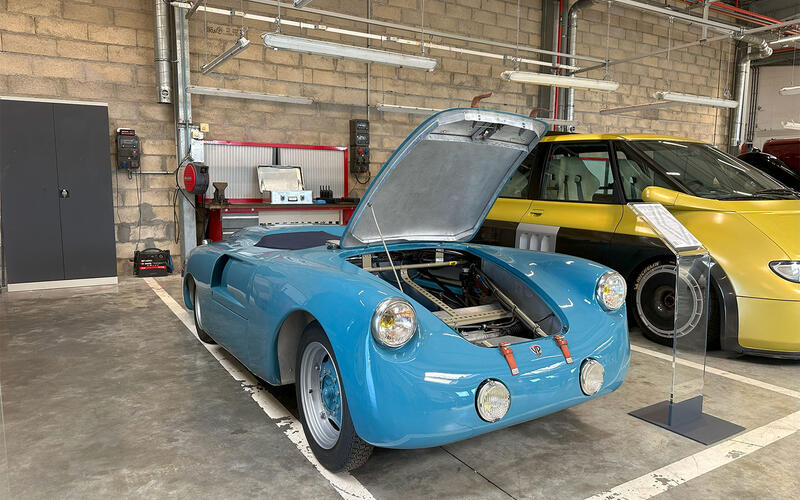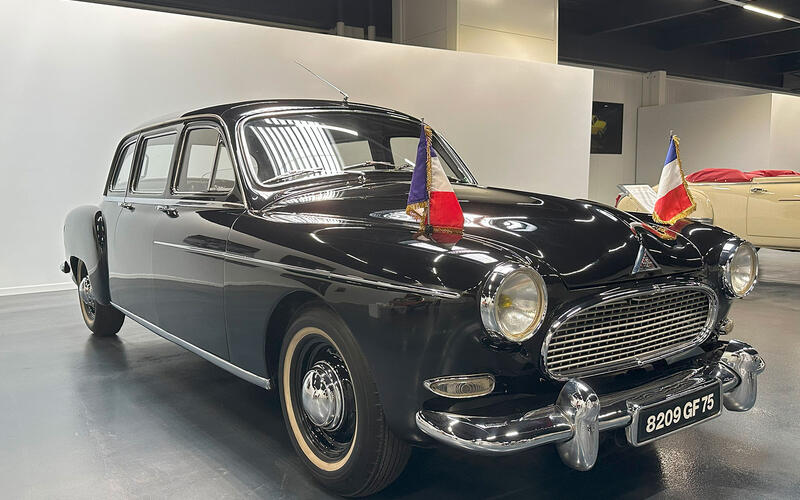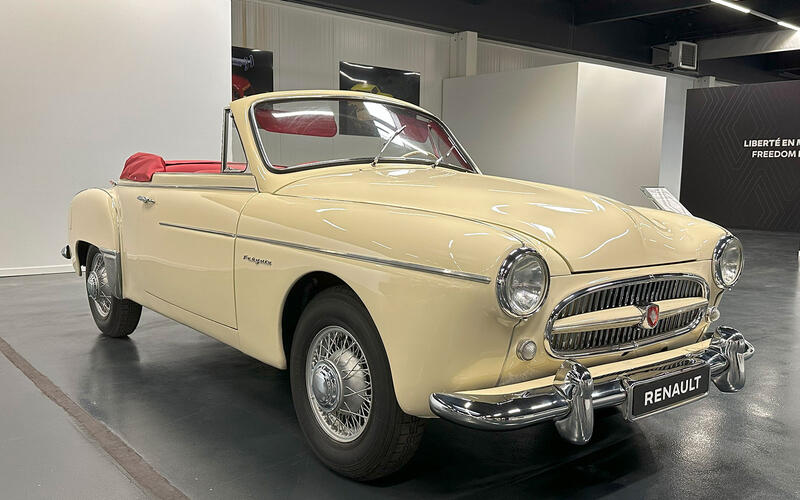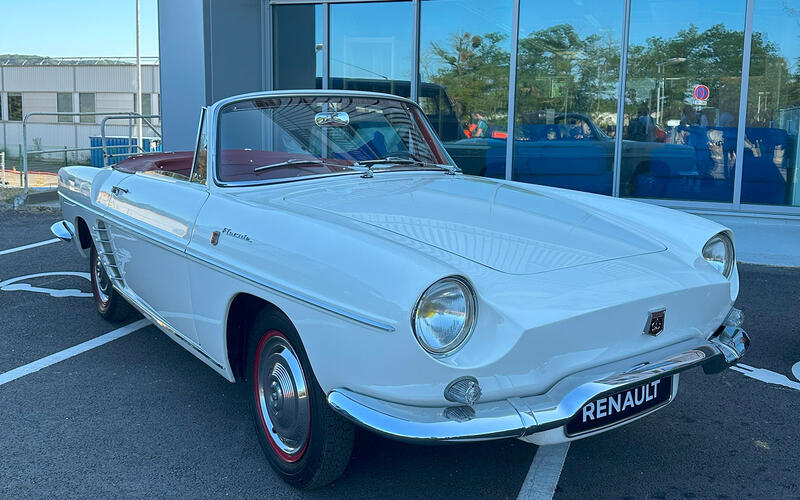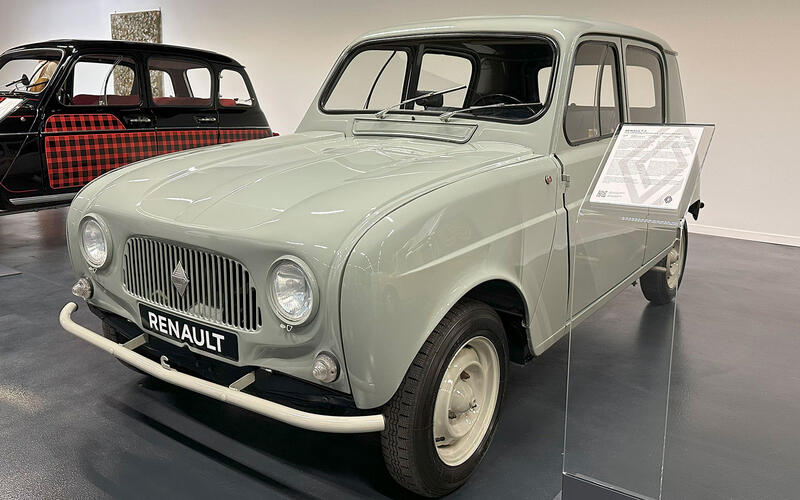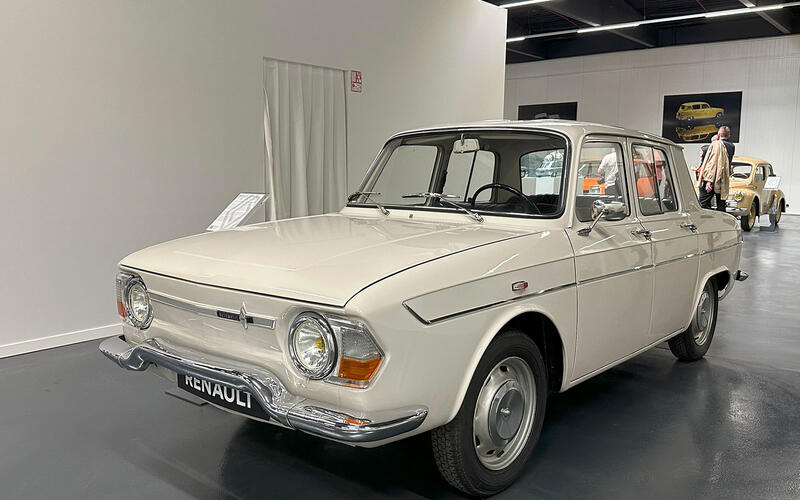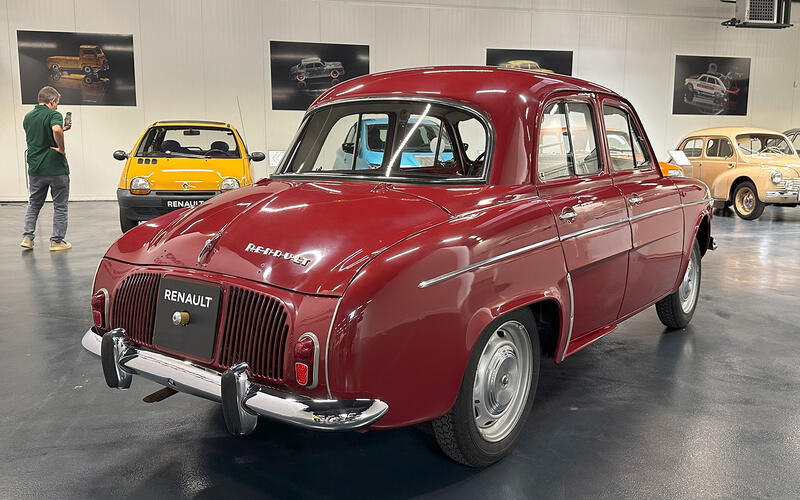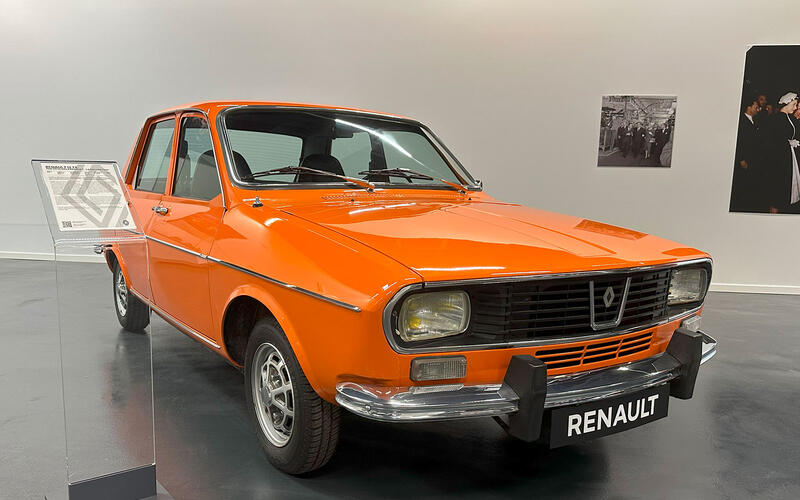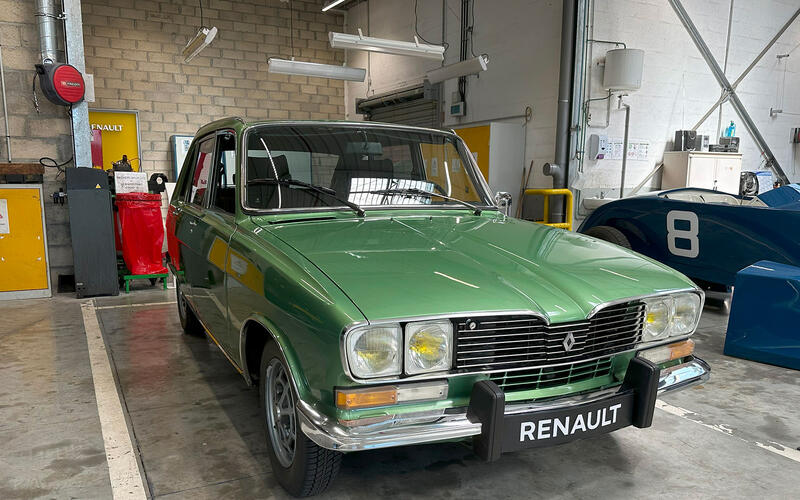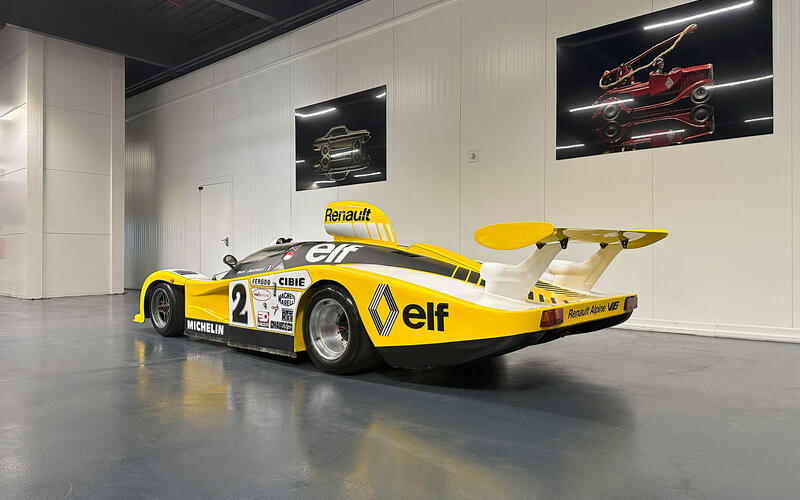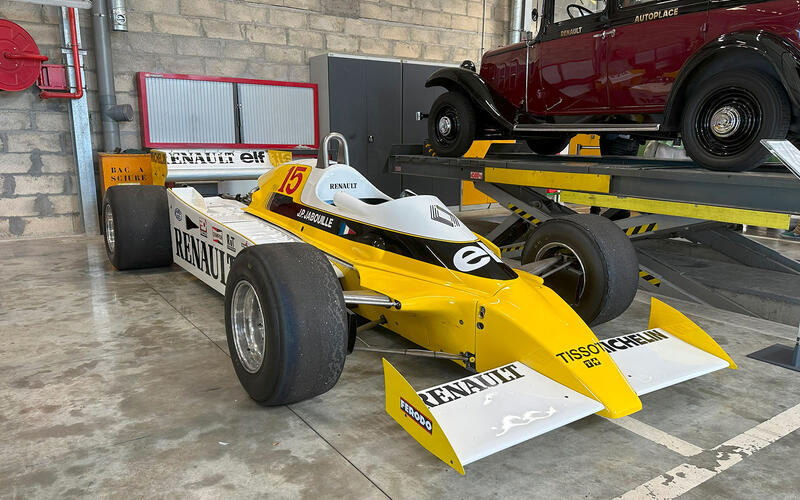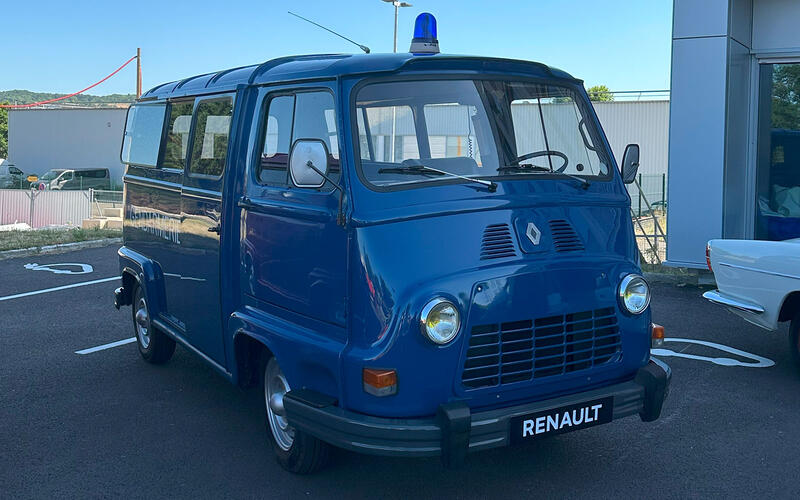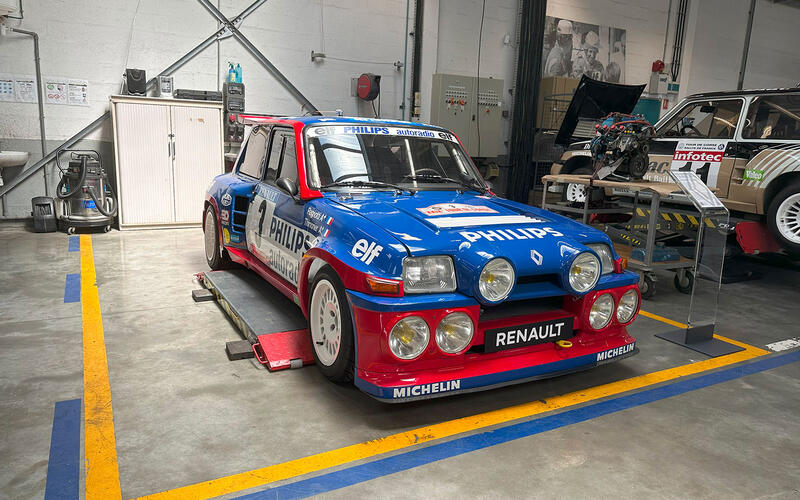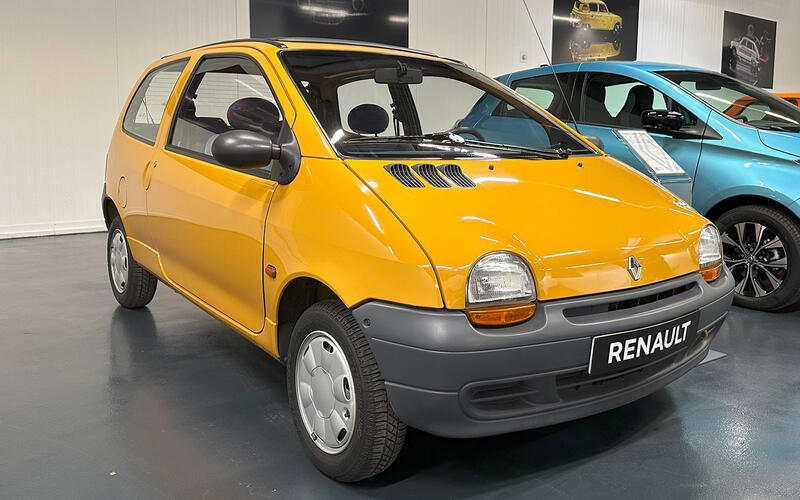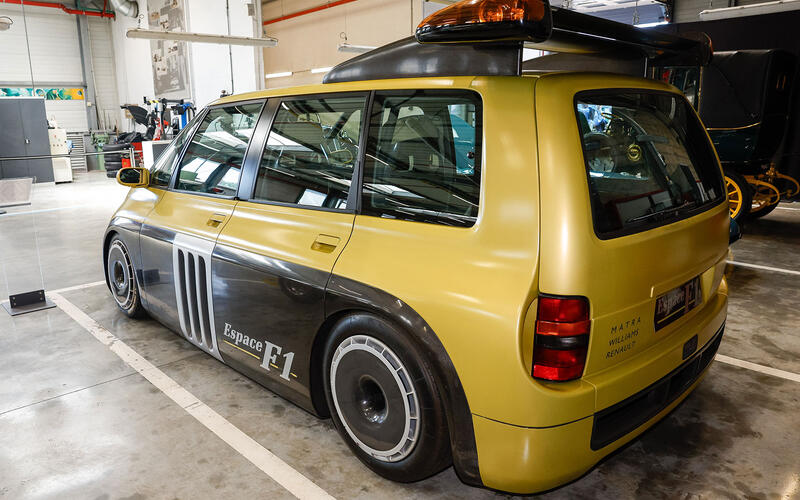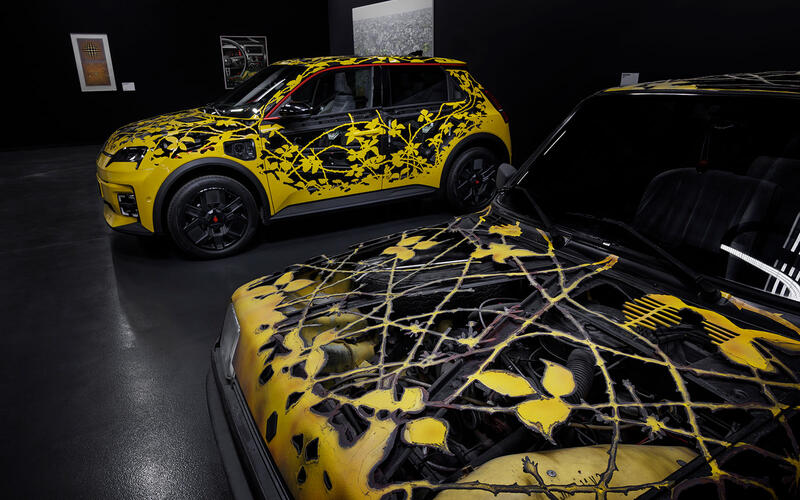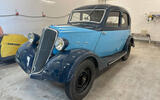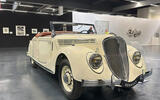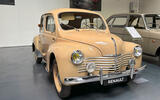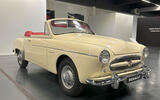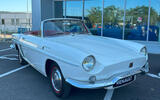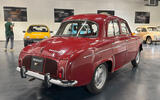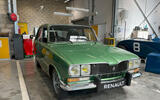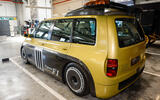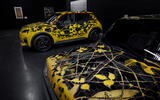 Slide of
Slide of
The history of Renault is rich, if unpredictable. It was founded in 1899 and quickly became a tour de force in engineering, racing, and luxury.
It was a very diverse company, not only making family cars, trucks and buses, but also winning the Monte Carlo rally with the 9.1-litre 40CV, and building aero engines.
Between the wars, Renault’s conservative model lineup allowed Citroen to overtake and become the largest car manufacturer in France, that was until Citroen’s first bankruptcy.
After the Second World War, Renault moved firmly into the mass market, and having endured another 80 years of worldwide turmoil, including its own CEO being assassinated, it's currently thriving.
To celebrate this, Renault will open a museum within the Flins factory in 2027, a place which has seen 18 million cars through the gates. We had a sneak peek at what will be featured in the 800-strong collection.
 Slide of
Slide of
1910 Type AG
As one of the first taxis by design, the Type AG became synonymous with Hackney Carriages in London, New York, and, of course, Paris. Replacing horse-drawn carriages, one of the big draws for drivers was that the fuel tank was swappable, so that shared taxis could be run without disputes over who was using whose fuel.
The Type AG earned legendary status in France when the government called upon Parisian taxis, of which the majority were Renaults, to transport 4000 soldiers to the Battle of the Marne to defend Paris in 1914.
 Slide of
Slide of
1932 Reinastella
Unfortunately for Renault, the launch of its flagship luxury car, designed to battle Hispano-Suiza, Rolls-Royce, Daimler, Lincoln, Packard, and Cadillac, coincided with the 1929 Wall Street crash. At 5.3 metres long, and with a 7.1-litre straight-eight engine, it was neither cheap to buy nor to run, and so only a few hundred were produced.
Even fewer remain today, often because they were recycled into planes during the Second World War, thanks to their extensive use of aluminium for the body.
 Slide of
Slide of
1934 Celtaquatre
Renault had been the largest car manufacturer in France before the First World War, however, while the Billancourt-based company remained very conservative in its technology and styling after the war, rivals Citroen were busy innovating.
The 1934 Citroen Traction Avant had front-wheel drive, all-independent suspension, a monocoque body and rack and pinion steering. In comparison, Renault’s rival, the Celtaquatre, looked and felt antiquated with rigid suspension all around. Even its far cheaper price couldn’t stop the Traction Avant and Peugeot’s 301 outselling it significantly.
 Slide of
Slide of
1935 Viva Grand Sport
Renault started out producing expensive luxury cars, and this carried on until the Second World War. With a 4.1-litre straight-six and almost 100bhp, the Viva Grand Sport was a big statement at the time, both physically and financially. This version is the Type ACX1, a three-seat convertible (there’s an extra dickie seat in the boot) penned by aeronautical designer Marcel Riffard. It was based on the more conservatively styled Vivastella, available in six-seat saloon and convertible options.
 Slide of
Slide of
1949 4CV
After the Second World War, France needed affordable, capable motorised transportation to get up on its feet, and preferably as quickly as possible. Renault responded with the 4CV, an all-new model that arrived less than two years after the armistice. Work on the model had actually begun during the war, but in secret because the development of passenger models was forbidden by the German occupiers.
Progress was slow, but it provided the company with a good head start once the occupation was over. The finished product was partly inspired by the Volkswagen Beetle, and quickly became the best-selling car in France thanks to its affordability.
 Slide of
Slide of
1952 4CV Barquette 1064 - Vernet Pairard
This is one that even the most devout Renault fans may struggle to name, but isn’t it pretty? The standard 4CV was the first French car to sell over a million units, but Just Vernet and Jean Pairard managed to turn it into a 24-hour Le Mans racer called the 1064. Despite the 904cc engine, the car broke eight records thanks to its streamlined body, including the 2000km record at an average of 103.2mph.
 Slide of
Slide of
1957 Fregate Limousine
The standard Fregate was introduced in 1951 to give Renault a car to sell to the middle classes, a growing group of people in the post-war economic growth Europe was experiencing. Initially, it was planned to have a rear-engine, rear-wheel drive layout, like the affordable 4CV, but a last-minute decision was made to make it front-wheel drive, boosting its modernity.
Even so, it was no more advanced than Citroen’s Traction Avant, which was a pre-war design, and as such the limousine version built to transport President Charles De Gaulle was shunned in favour of De Gaulle's preferred Citroens.
 Slide of
Slide of
1958 Fregate Sport
As well as a saloon (and its stretched limo counterpart), the Fregate was also offered as a sporty convertible. However, this was a coachbuilt affair, with Letourneau and Marchand building the model on a very small scale. In addition to the new body, the interior was retrimmed with plenty of extra chrome added. Due to added expense and lacklustre performance from the 2.1-litre 76bhp four-cylinder, just three were produced.
 Slide of
Slide of
1961 Floride
Although you may be unfamiliar with the Floride name, you might recognise this shape. In the UK and USA, it was badged as the Caravelle, and in the rest of the world as the Floride to start with, before switching over to the Caravelle nameplate four years into production.
The car in question is a rear-engined, rear-wheel drive convertible or sports coupe designed by Italian Petro Frua of Carrozzeria Ghia. Although it possesses very exotic looks, it shares its bones with the humble Dauphine, and as such was powered by a tiny 845cc four-cylinder with just 37bhp.
 Slide of
Slide of
1962 Renault 3
The Renault 4 is familiar to us all, but what about the Renault 3? It’s the forgotten twin-sibling to the incredibly successful 4, which chalked up 8 million sales over more than 30 years. The 3, on the other hand, was produced for just two years; quickly withdrawn due to its unpopularity. What was the difference? The 3 went without hubcaps, back-side windows, and just a single sunvisor. A cheap version, in other words.
This, along with a smaller 603cc engine, put it in a lower tax class, meaning it was 40 francs cheaper than Citroen’s 2CV, itself cheaper than the 4. Most buyers opted for the extra comforts of the 4, though.
 Slide of
Slide of
1966 R10
Many people will be familiar with the distinctive look of the Renault 8, especially in quad-headlight Gordini form, but might not know of the 10. In short, it was the luxury version of the 8, with extended front bodywork allowing for more luggage space - the pair are rear-engined.
Having gone on sale in 1965, the 10’s replacement, the 12, was on sale in 1969, and although the 10 remained on sale for a couple more years, it remained an oddball proposition in the Renault lineup and is all but forgotten today.
 Slide of
Slide of
1968 Dauphine Gordini
Arguably the model with the closest connection to Flins is the humble rear-engined Dauphine. This was simple and inexpensive transport to replace the 4CV, but it reflected the French economic recovery and, as such, was designed to be far more refined, while capable of travelling at 100km/h on the new autoroutes and bettering 40mpg.
Over a million were built at Flins from 1956, and the ‘sporty’ Gordini version lasted right up until 1968 - 0-62 took ‘just’ 27sec in this version, 10sec faster than the standard model.
 Slide of
Slide of
1974 R12 TS
Despite selling 2.5 million units over more than a decade, we can’t see Renault reviving the 12 anytime soon. Large non-SUVs aren’t very fashionable these days, and the 12 is hardly as chic-looking as the 4 or 5 anyway. It was designed to be a large enough car for a family, but much cheaper than the larger 16. The demands given to the engineers and designers were that the car had to be economical, but not very sophisticated, so cheap to produce all over the world, but still comfortable enough for France. It had to have a roomy interior, and a large boot, but a small engine.
 Slide of
Slide of
1975 16 TX
When the 16 first appeared in 1965 it was quite the innovator, and that’s something Renault is clearly proud of - they had three on display to show off. The fact that it was built until 1980 proves its modernity, as does its 1965 Car of the Year prize.
Its front-wheel drive, aluminium engine, and electric cooling fan were advanced, but hardly revelatory, but the hatchback bodystyle is what set it apart, allowing the interior to be configured in seven different ways, without having to sacrifice the ‘style’ of a saloon for an estate. Interior space and practicality were key to the family-oriented model, with a column-mounted gearchange aiding the roominess. This TX version features luxuries such as electric windows and central locking.
 Slide of
Slide of
1978 Alpine A442 B
Our personal favourite was this stunning long-tail Renault-Alpine, coming in at 4.8 metres long (with what looks like most of that behind the rear wheels). For the 1978 Le Mans 24 hours, four Renault-Alpines were entered, three A442s, and one A443, which was the successor. Despite a deficit in horsepower and cubic capacity over the rival Porsches, it was one of the 442s that went on to claim victory, after the 443's engine failed late in the race.
 Slide of
Slide of
1979 RS10
Encouraged by its Formula 1 partner, French oil giant Elf, Renault developed a turbocharged engine for the 1977 RS01. In an era of 3.0-litre V8s and flat-12s, Renault's new 1.5-litre V6 proved to be surprisingly fast, but catastrophically unreliable. For the RS10 though, they made it work better. This time it had a twin-turbo setup, was even faster, and reliable enough to win a race.
It still wasn't great - surprising considering Renault had won the ‘78 Le Mans with a turbocharged engine - but it showed the rest of the grid that turbocharging would be the way. Despite their pioneering efforts, Renault never won a championship using the technology before it was banned in 1989.
 Slide of
Slide of
1980 Estafette
This was Renault’s first production car with front-wheel drive, which is particularly relevant as it was designed to be as compact and light as possible, while offering a large load area. The cab-forward design, with the driver sitting over the engine and front wheels, was quite unusual at the time, and it had other clever features too, like a sliding driver's door for getting in and out in tight spots. Its utility made it popular with all sorts of professionals, including the Gendarmes.
 Slide of
Slide of
1985 Maxi 5 Turbo
The ultimate version of the 5 was, like many of the meanest '80s machines, created for Group B rallying. Power over the standard 5 Turbo rose from 158bhp to a massive 345bhp. Drive, from the mid-mounted 1.6-litre engine, was to the rear wheels, which prevented it from continually challenging four-wheel drive rivals like the Audi Quattro. Still, its competitiveness was impressive, and Renault claims it is the fastest two-wheel drive rally car ever.
 Slide of
Slide of
1992 Twingo
The original Twingo is quickly becoming a cult classic. It revived the European city car segment with its MPV-like design that allowed for increased interior space, but most remembered today is its cutesy looks. Early cars (this one being the very first) were all specified the same, with only a choice of four colours (yellow, green, blue, red) and an optional canvas sunroof for the customer to make.
 Slide of
Slide of
1994 Espace F1
Two 3.5-litre V10-engined Espaces were built as a collaboration between Matra (which built the Espace), the Williams Formula 1 team, and their engine supplier Renault. There wasn’t really much Espace in it at all; it had a carbon fibre chassis and body, a mid-mounted F1 V10, six-speed paddle shift gearbox and rear-wheel drive. It only had four seats, too. Still, does any of that matter when it has 750bhp, weighs 1100kg and can do 0-62 in 2.8sec?
 Slide of
Slide of
2021 Suite No4
To celebrate the 60th anniversary of the R4, Renault teamed up with designer Mathieu Lehanneur to create something that combines architecture and automobiles. The rear has been transformed with a new glass structure, with roof-mounted solar panels to power new LED lights. Inside, bright yellow velvet gives a lounge-like feel to the very compact bedroom - the Suite No4 is inspired by Nomadic hotel suites.
 Slide of
Slide of
Dan Rawlings’ 5s
With the new museum, Renault is looking to showcase more than just its cars; it sees itself as a cultural institution in France, and that is reflected in art acquired or commissioned by the brand, this being the latter. British artist Dan Rawlings is known for his delicate work of metal lace cutouts, and for this project he worked in residence in the Douai factory to create this pair using hand-made plasma cuts from the bodywork.
All Dan’s works are inspired by nature, and this time it was the vegetation around Douai, in the form of intertwined brambles.
If you enjoyed this story, please click the Follow button above to see more like it from Autocar
Access control:
Open
Include in Apple News:



